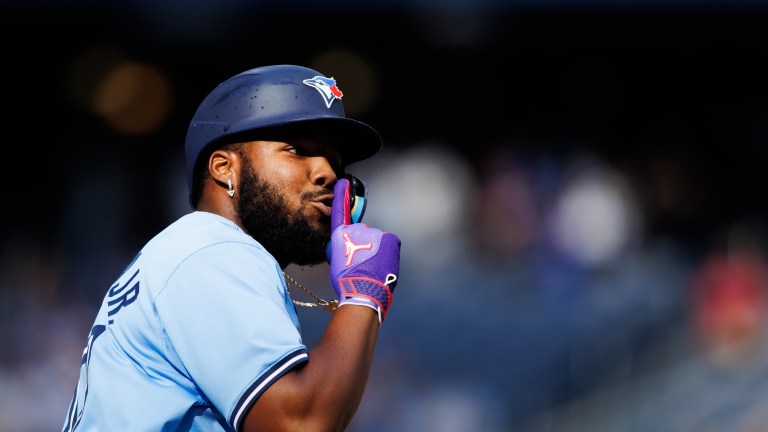The Blue Jays Front Office Shot Themselves In the Foot Again
Spring training typically brings excitement for the season ahead, but for the Blue Jays, it marks yet another front-office failure.

And just like that, spring training is underway. The Toronto Blue Jays’ pitchers and catchers reported to camp in Dunedin, Florida, on February 13, with all other players reporting five days later for the first full-squad workout.
In any other year, the start of spring training would bring excitement and anticipation for the season to come, but this year, the first workout marks the Blue Jays’ failure to meet an unfortunate deadline and the now-almost-certain impending loss of franchise star Vladimir Guerrero Jr.
With free agency looming for Guerrero at the end of 2025, the Blue Jays have supposedly been working to negotiate a contract extension this winter, but the gap between the two parties’ expectations has been vast.
When interviewed on the Spanish-language Abriendo El Podcast in December, the 25-year-old described the Blue Jays’ then-recent $340 million extension offer as “not even close to what we are looking for,” and set a firm deadline for Toronto to sort out a new, higher offer, stating that all extension talks would be cut off once spring training starts.
Well, that deadline has now officially come and gone, and no deal has been struck. With that, Guerrero will go into the 2025 season as an impending free agent, set to become yet another star that slipped through the fingers of the Blue Jays’ ever-disappointing front office.
Guerrero Knew His Value
Coming off one of the best seasons of his career, Guerrero went into this winter in an extremely strong position to negotiate a contract extension.
The first baseman posted a stellar .323/.396/.544 line and 166 OPS+ in 697 plate appearances last year, leading the Blue Jays in batting average, OPS (.940), homers (30), RBI (103), runs scored (98), hits (199), doubles (44), and walks (72), while earning his fourth consecutive All-Star selection and second Silver Slugger Award.
After a down year the season prior, Guerrero’s 2024 campaign silenced any doubts about his value in Toronto and confirmed that should he hit free agency at the end of 2025, he’ll unquestionably be the top slugger available on the market.
Between Shohei Ohtani’s 10-year, $700 million deal with the Los Angeles Angels last offseason and Juan Soto’s 15-year, $765 million contract — the largest in professional sports history — with the New York Mets in December, a clear benchmark has been set for the value of elite sluggers in free agency.
While Guerrero’s track record hasn’t been consistent or dominant enough to secure him a deal in the $700 million range, it’s certainly not surprising that he rejected the Blue Jays’ offer of $340 million — even if he denies Soto’s record-breaking deal had any bearing on his decision.
“Even before that, I knew my value,” Guerrero told ESPN’s Jeff Passan on February 18. “I knew my number.”
Blue Jays Effectively Lock In Imminent Rebuild
The 2025 season will be Mark Shapiro’s 10th as president and CEO of the Blue Jays, as well as Ross Atkins’ 10th as the team’s general manager.
Since their hiring before the 2016 season, the Blue Jays have failed to secure a single division title, and despite four playoff berths, they’ve only once managed to get past the first round (2016).
The Blue Jays’ name has become synonymous with missing out on top free agents, from Ohtani last winter, to Soto, Corbin Burnes, Teoscar Hernández, and Roki Sasaki this offseason, so their failure to lock down Guerrero doesn’t exactly come as a surprise.
Still, Atkins insists the Blue Jays were “very, very aggressive” in their pursuit of the slugger, as he told Jeff Passan.
“I am confident that we exhausted the communication, the ideas, the thoughts and communicated every dollar,” Atkins told Passan at spring training. “… The offers that we made for Vlad would’ve been record-setting and would’ve made him one of the highest-paid players in the game.”
Guerrero tells a different story.
“They have their numbers; I have my numbers,” he told Passan, and when asked if the team had gotten anywhere close to what he was asking, the 25-year-old simply answered, “No.”
Alongside Guerrero, shortstop Bo Bichette is due to become a free agent for the first time at the end of the 2025 season, and if the chances of Bichette re-signing in Toronto were already slim to none, the team’s failure to secure a new deal with Guerrero just pushed them firmly to “none.”
In fact, one of the many reasons why so much importance was put on re-signing Guerrero this winter was because Bichette leaving the team seems to be a foregone conclusion.
And it’s hard to blame Bichette or Guerrero for no longer having any interest in fighting to stay in Toronto. The Blue Jays have been floundering for years now, so why would any top player want to entertain a woefully unenthused front office as they struggle to find any remnants of direction?
After three consecutive seasons of regressing win-loss records culminating in a fifth-place finish in the AL East last year, the fact that the Blue Jays are now set to lose both Guerrero and Bichette at the end of this year make it abundantly clear that the team is hurtling towards a rebuild.
Since Bichette has had one foot out the door for months now, securing Guerrero as their long-term franchise player was the Blue Jays’ last-ditch attempt at keeping the team afloat with a star to build the roster around.
Now, that ship has sailed.
“Listen, I want to be here. I want to be a Blue Jay for the rest of my career,” Guerrero said, per Passan. “But it’s free agency. It’s business. So I’m going to have to listen to 29 more teams and they’re going to have to compete for that.”
Well, considering Toronto’s recent record with securing stars in free agency, Blue Jays fans should probably just start saying their goodbyes to Vladdy now. Atkins can say the front office was “very, very aggressive” until he’s blue in the face, and hey, maybe they were. Still, the list of stars who were almost signed by the Blue Jays only grows longer, and there’s just one common denominator.
